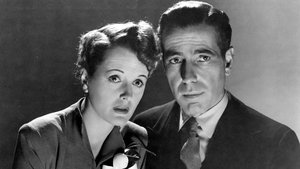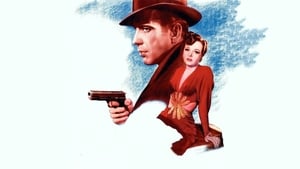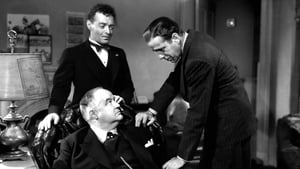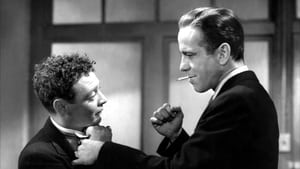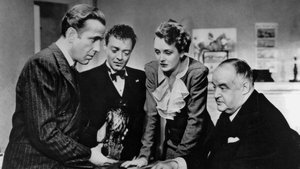Contact: [email protected]
Video Sources 0 Views
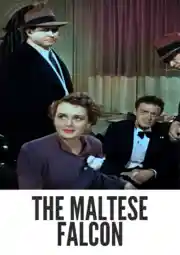
Synopsis
[ez-toc]






Introduction
In the realm of classic cinema, where black-and-white frames once dictated visual narratives, the debate over colorization has stirred controversy. The Maltese Falcon Colorized 1941, an iconic film in the noir genre, stands at the center of this discourse. This article delves into the intricacies of this colorized adaptation, exploring its impact on the timeless masterpiece directed by John Huston and penned by Dashiell Hammett. As we navigate the vibrant world of The Maltese Falcon in color, we unravel the layers of controversy, appreciate the film’s original noir charm, and ponder the future of colorization in preserving cinematic heritage.
Read Media File Transfer Agreement: Terms and Conditions
Read FAQ
The Maltese Falcon Colorized: A Noir Masterpiece
The Maltese Falcon Colorized, released in 1941, emerged as a noir masterpiece directed by the visionary John Huston. Adapted from Dashiell Hammett’s novel, the film starred the incomparable Humphrey Bogart as the gritty private detective Sam Spade. The narrative revolves around Spade’s involvement in a quest for a priceless falcon statuette, entangling him in a web of deceit, betrayal, and femme fatales. The film’s dark, shadowy visuals and morally ambiguous characters became quintessential elements of the film noir genre.
John Huston’s directorial debut with The Maltese Falcon Colorized showcased his ability to craft a gripping and visually compelling narrative. Huston’s approach to storytelling, combined with Hammett’s sharp writing, laid the foundation for a noir classic that has endured through the ages. The film’s success hinged on the stellar performances of its cast, especially Bogart, whose portrayal of the cynical and mysterious Spade left an indelible mark on cinema.
Controversy and Craft: The Art of Colorizing Classic Cinema
The controversy surrounding the colorization of old movies is not new, with purists arguing that altering the original black-and-white aesthetic dilutes the authenticity of classic films. However, proponents of colorization argue that it breathes new life into these movies, making them more accessible to modern audiences. AlwanFilm’s approach to colorizing The Maltese Falcon Colorized 1941 involves a meticulous process, aiming to enhance the viewer’s experience without compromising the film’s essence.
The debate over authenticity versus artistic freedom in colorizing old movies continues to be a hot topic. While some argue that colorization compromises the director’s original vision, others view it as a means of preserving classic films in a way that resonates with contemporary audiences. The challenge lies in finding a balance that respects the historical integrity of the film while acknowledging the evolving tastes and preferences of today’s viewers.
Examining The Maltese Falcon Colorized 1941: Does It Enhance or Dilute the Viewing Experience?
In assessing the impact of colorization on The Maltese Falcon Colorized, one must consider the performances of key actors like Mary Astor, Peter Lorre, and Sydney Greenstreet. The colorized version introduces vibrant hues to the film’s noir palette, transforming the visual landscape. The question that looms large is whether this enhancement adds depth to the narrative or dilutes the original intent.
Mary Astor’s portrayal of the enigmatic Brigid O’Shaughnessy, Peter Lorre’s depiction of the sly Joel Cairo, and Sydney Greenstreet’s memorable turn as the sinister Kasper Gutman are integral to the film’s success. The colorization process must be scrutinized for how it complements or clashes with the nuances of these performances. Does the added vibrancy enhance the emotional resonance of the characters, or does it distract from the film’s inherent noir atmosphere?
The Director’s Vision: John Huston’s Defining Work in The Maltese Falcon Colorized
John Huston’s directorial debut with The Maltese Falcon Colorized remains a landmark achievement in cinema history. The original black-and-white release allowed audiences to experience the film through the lens of Huston’s distinct vision. The use of shadows, low-key lighting, and stark contrasts contributed to the film’s noir aesthetic, emphasizing the moral ambiguity and psychological depth of the characters.
Exploring Huston’s directorial style in the black-and-white version provides a benchmark for understanding the director’s intended visual impact. The challenge for colorization is to respect and enhance this vision without overshadowing the elements that make The Maltese Falcon Colorized a noir classic.
Preserving the Past, Embracing the Future: The Enduring Legacy of The Maltese Falcon Colorized
The Maltese Falcon holds a significant place in film history, influencing subsequent generations of filmmakers and becoming a cultural touchstone. The film’s historical significance underscores the importance of preserving its original form. However, the enduring legacy also invites exploration through different lenses, such as colorization.
The delicate balance between preserving the past and embracing the future raises questions about film preservation’s evolving nature. Can colorization be a gateway for new audiences to appreciate classic cinema, or does it risk overshadowing the importance of preserving films in their original state? The challenge is to navigate this tension, ensuring that different iterations of a film coexist harmoniously, offering audiences diverse entry points into cinematic history.
Embracing the Maltese Falcon in Its Many Hues: Appreciating Both the Original and Colorized Iterations
As audiences engage with The Maltese Falcon Colorized 1941, it is crucial to appreciate the film in both its black-and-white and colorized forms. Each version offers a unique perspective on the narrative and visual aesthetics. The monochromatic palette captures the essence of film noir, while colorization introduces a fresh, vibrant layer to the story.
Encouraging viewers to approach The Maltese Falcon with an open mind allows them to appreciate the film’s nuances in different ways. The colorized version, when viewed as a reinterpretation rather than a replacement, becomes a valuable addition to the cinematic experience. The challenge lies in fostering a balanced appreciation that recognizes the merits of both iterations.
FAQs on The Maltese Falcon Colorized 1941
Addressing common questions about The Maltese Falcon Colorized 1941 helps dispel uncertainties and provides clarity for viewers. Is the colorized version authorized by the filmmakers, or is it a controversial reinterpretation? How does it compare to other attempts at colorization in terms of authenticity and fidelity to the original vision?
Providing answers to these FAQs establishes a foundation for viewers to make informed decisions about which version to experience. It also sheds light on the collaborative efforts involved in bringing a colorized adaptation to fruition while respecting the legacy of the original creators.
In Defense of Colorization: Debunking Myths and Misconceptions
The criticism against colorizing classic films often revolves around the fear of erasing the original artistic intent. However, proponents argue that colorization can be a form of film restoration, breathing new life into old movies and attracting a broader audience. Debunking myths and misconceptions about colorization is essential to fostering a more inclusive conversation about preserving cinematic heritage.
Colorization, when done with care and respect for the source material, can be a powerful tool for introducing classic films to new generations. It is not about erasing history but rather providing alternative ways for audiences to connect with the past. By addressing the concerns surrounding colorization, this discussion aims to broaden perspectives on preserving the cinematic legacy.
The Future of Colorization Technology and Its Implications for Film Preservation
Advancements in colorization technology raise ethical considerations for archivists and restorers. As the capabilities of technology expand, questions about the boundaries of artistic reinterpretation versus preservation become more complex. Exploring the future of colorization technology involves understanding its potential impact on the authenticity of classic films and the responsibilities of those entrusted with their preservation.
The evolving landscape of colorization technology prompts a reevaluation of preservation practices. Striking a balance between embracing technological advancements and preserving the original artistic intent becomes crucial for ensuring the longevity of classic films in a rapidly changing cinematic landscape.
Reimagining Other Cinematic Gems: Notable Colorization Projects
While The Maltese Falcon Colorized 1941 is a focal point, exploring other successful colorization projects sheds light on instances where the process has been executed with care and respect for the original artistic vision. From timeless classics to beloved favorites, these examples demonstrate that colorization can be a valuable tool for introducing iconic films to contemporary audiences.
Highlighting these notable projects provides a broader perspective on the possibilities and challenges of colorization. It showcases instances where the reinterpretation of classic films has been met with appreciation, emphasizing that when approached thoughtfully, colorization can breathe new life into cinematic gems.
Conclusion
In concluding the exploration of The Maltese Falcon Colorized 1941, it is essential to encourage a balanced appreciation for both the original and colorized versions. The enduring legacy of this noir masterpiece invites viewers to embrace diverse interpretations while prioritizing the preservation of its intended black-and-white aesthetic. The ongoing debate surrounding colorization in film underscores the need to approach cinematic heritage with an open mind, recognizing the value of different perspectives in keeping the magic of classic movies alive. In the evolving landscape of film preservation, let us celebrate the many hues of The Maltese Falcon and, by extension, the rich tapestry of cinema’s storied past.

